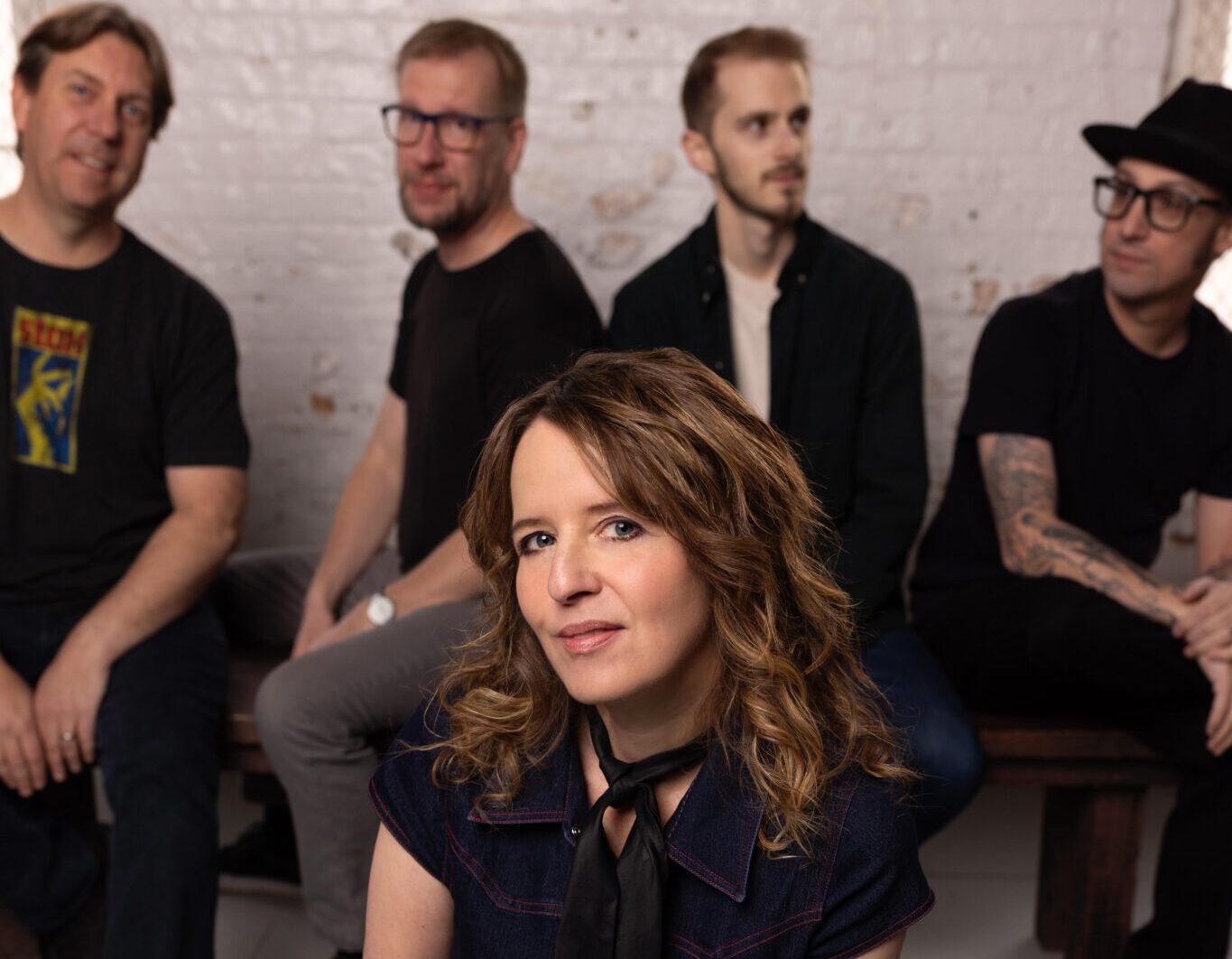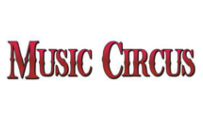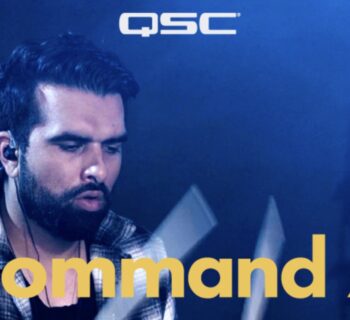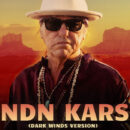Elvis Costello & The Imposters with Charlie Sexton. Elvis Costello has confirmed 2025 tour dates for Radio Soul!: The Early Songs of Elvis Costello.
I look forward to the two Los Angeles shows at The Orpheum Theatre June 21st and June 22nd.
The trek kicks off in Seattle, WA, on June 12th, and spans the United States with stops in Portland, Reno, San Francisco, Los Angeles, Nashville, before closing in Miami Beach on July 12th. As the playful billing suggests, the show features numbers drawn from record releases from My Aim Is True in 1977 to Blood & Chocolate in 1986, along with other surprises.
Regarding the decision to sharpen the focus on a specific period of time, Costello reminded us: “You can expect the unexpected and the faithful in equal measure. Don’t forget this show is ‘Performed by Elvis Costello & The Imposters,’ an ensemble which includes three people who first recorded this music and two more who bring something entirely new. They are nobody’s tribute band. The Imposters are a living, breathing, swooning, swinging, kicking and screaming rock and roll band who can turn their hands to a pretty ballad when the opportunity arises.”
Also, out in 2024, via UMe was The Songs of Bacharach & Costello, personally compiled by Elvis Costello, brings together all of the published songs that Costello has written with the legendary Burt Bacharach, one of the great composers of popular music in the 20th and now 21st Century.
The Songs of Bacharach & Costello, celebrates a collaboration which began in 1995 and which continued to 2023. Recorded in Hollywood in 1998, the album, Painted From Memory – orchestrated by Bacharach with the exception of the title track which was arranged by the great Johnny Mandel – has gone on to capture an appreciative worldwide audience far beyond its initial retail release. The song “I Still Have That Other Girl”even managed to win a Grammy for the “Best Collaboration With Vocals” category of the 41st Awards.
Painted From Memory has been newly remastered for its 25th anniversary from the original tapes by Bob Ludwig at Gateway Mastering Studios. The comprehensive 45-song set also includes live performances of Bacharach and Costello performing several of the songs from Painted From Memory, as well as other beloved Bacharach numbers, with orchestras in New York and London; Costello performing stripped down versions of the songs on his “Lonely World Tour” with Nieve (the classically trained pianist and keyboard player in both The Attractions and The Imposters); and a selection of Bacharach and Hal David songs Costello has performed and recorded over the years, including “I’ll Never Fall In Love Again,” which Bacharach and Costello performed together on screen in Austin Powers: The Spy Who Shagged Me.
The assembly implements a newly written 10,000-word essay by Costello that beautifully details his nearly three-decade long friendship and prolific musical partnership with Bacharach, and how influential the songwriter has been throughout his life.
Meticulously sequenced with the invaluable help of product producer, Steve Berkowitz, The Songs of Bacharach & Costello is the complete picture of the two songwriters enduring partnership and friendship.
In 1998 for the now defunct Musician magazine, I interviewed Elvis Costello and Burt Bacharach over a week period at Ocean Way Recording Studios in Hollywood, California, as they were mixing Painted From Memory. Bacharach’s debut effort co-writing with Costello on a recording of their song, “God Give Me Strength”, which was specially composed for the film, Grace Of My Heart, was nominated for a Grammy Award in March 1997
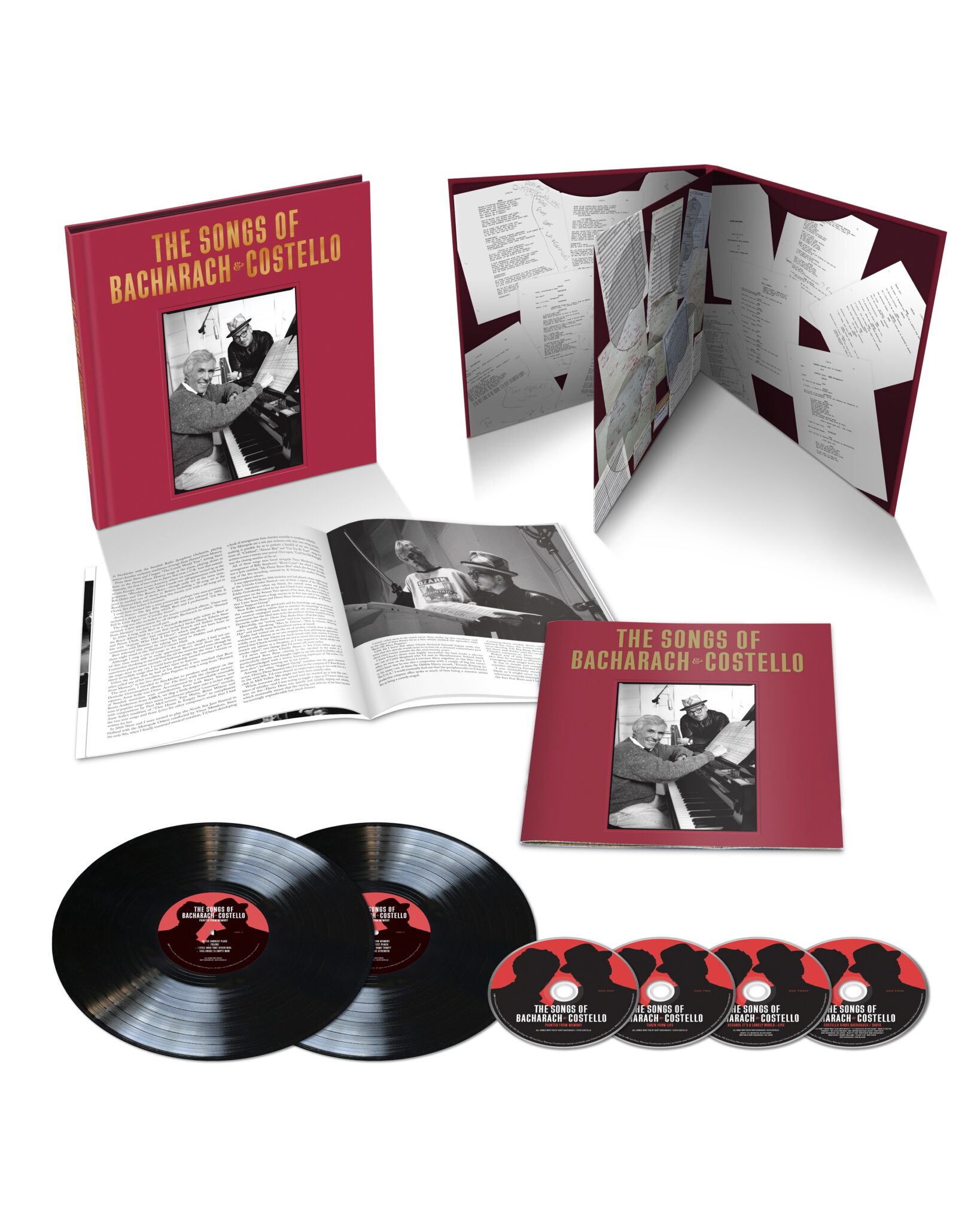
HK: I know the foundation of this Burt Bacharach collaboration goes way deeper than your previous covers of “Baby, It’s You” and “I Don’t Know What To Do With Myself”, as well as including a rendition of a Bacharach/Bob Hilliard selection, “Please Stay”, on your Kojak Variety album.
EC: I have a perspective on it that someone of my years probably shouldn't have. I always heard Burt’s tunes in cover form first. And that was important. The stuff that my dad brought home were “A” label singles. Like the Beatles ones I had were as the non-single tracks like “Michelle”, and songs from “Rubber Soul” that they (Northern Songs) thought were better suited for covers than, maybe, “Drive My Car” was. They were sent over on demonstration acetates. Rather than having the Parlophone label, which never pressed “Michelle” as a single, Dick James Music (Northern Songs), the publisher, pressed an acetate.
It’s very natural for me because I grew up also with my mother being a record sales person and really knowing the catalog backwards in a day when being a record sales person was closer to being a librarian than it is now. And that’s how I know all the so-called “standards” that I obviously didn’t grow up with, because they were just around me. I grew up with a band sound around the house, in the sense of my dad being a band singer. And I went to rehearsals as you know, and BBC. radio broadcasts with him. I knew my dad was doing something seriously, because he went to work in the evening and he wasn’t a burglar. When I was really young, I couldn’t go to the dance hall. I used to go on the weekend on the afternoon sessions and sit up in the balcony and watch the ballroom dancers, and he would get to play percussion, because the ballroom dancers didn’t like singers because they messed with the rhythm.
And my poor old dad had to stand up there with the three singers on the side, sitting on chairs, getting up to take their vocal turn. My dad would play congas and maracas on the Latin American medley (grins). When my dad did the Royal Command Performance, in 1964 I think it was, I believe it was the one Burt was on, arranging for Marlene Dietrich. That was like a big thing! I told my friends, “My dad is going to be on The Royal Command Performance and, bigger still, The Beatles are gonna be on it”, you know. Only recently did I realize it was the same one Burt did with Dietrich. They were all on the bill together. All this music was rattling around in my head all the time I was growing up.
HK: I’d like to know about the pre-production and songwriting process for a whole album of Bacharach/Costello songs?
EC: The title was taken from one of the songs (“Painted From Memory”), not to place any more importance on that song, I think. It’s a nice title. The pre-production really, I suppose was the writing period. I suggested to Burt we pick up the thread from “God Give Me Strength”, and see what happened when we got in the room together, ya know? You probably know we didn’t actually work in any kind of room together until we made that record. That was done by fax machine and telephone because it was the only way to do it because of the production deadline. If you’ve seen the film, the song is performed and obviously they had to have it in time to film it. So that was the only way. I was on tour in Europe and Burt and I had five days to do it. It was very quick. Having written that song that seems that strong, ya know, and having made a record of it, I thought it was fantastic.
BB: We didn’t really get together until we were in New York. I had written the orchestration in Florida, or wherever that was.
EC: That was the first experience in working together and seeing how, for me you know, the things you sort of assume from listening to records and seeing Burt work, and seeing how he’ll take a cue that was such a vague suggestion on the demo that I had written down at home, and then it would be really defined. Burt had written the introduction figure, which was an additional figure in the composition, which set up the vocal, because whenever I played the song to myself, it was very hard to get started with the song. To physically just start singing. It was actually quite a difficult song to start singing.
BB: After that, we got together five or six times for writing sessions in different places like New York or in Los Angeles. And we got to know each other and the work process very well. Each time we got together we’d spend a lot of hours. Four or five hours a day. We were working a lot with two keyboards. Because very seldom have I written with somebody who is a musician, a composer as well as a lyricist. So, we usually sat at two keyboards, sometimes like in New York at a hotel we just had one keyboard. But out here in L.A. at my studio, Elvis would sit at the acoustic Yamaha. We’ve collaborated on the music. So that’s very different than me writing a piece of music and giving it to a lyricist, or taking a lyric that has been given to me and setting it to music.
EC: Yeah. On this record, there’s only one song that has any information in it at all, any initial musical structure, derived from the guitar, and that’s some of the music in “Painted From Memory” started on the guitar. Everything else that I’ve written was based on the piano. And even “Painted From Memory”, almost as soon as I showed it to Burt, the key changed, because it wasn’t a practical key for singing. And once it was on the keyboard, I never touched the guitar again...
I can recognize there is a certain characteristic to the songs where one of us may be the dominant writer of the initial music, but with the exception of the songs that are almost wholly Burt’s composition, they’ve all stopped having the sense of who wrote them, because we worked on them together so much, I don’t even think about who wrote what.
All I know is that once they were on the piano, they stayed on the piano. Because, as limited as my abilities are, I could see it in front of me, and when Burt would show me something as a change to maybe something that I proposed initially, and hand it back to me with an amendment to the harmony or a rhythmic change, there was no point in trying to put it back on the guitar. There are good songs we’re happy to put our name on. I think the collaborative thing, I think it’s true, and I’m just as inclined to say, “I must do that vocal again”. I mean, in “God Give Me Strength,” for example, there’s a crack in the voice in the bridge that I wanted to fix, and Burt said, “Leave it”. And now I’m so glad he made me leave it there because I realize he was right saying it had a feeling, and if you fix every bit of feeling out of it, that’s a danger.
HK: Can you discuss recording the vocals.
EC: I think the ‘vocals’ come from the compositions. Just the way the tunes lay and the amount of space there is in them. ‘Cause it’s naturally the way they’re paced, and rhythmically the movements that they make, particularly the short phrases followed by longer phrases, not consistent like in a pocket with a very insistent rhythm.
BB: Nothing is crowded. But then our intent was not to be crowded in the composition, or crowded in what was gonna be jammed in on the color, the orchestration, things that would be too busy behind.
EC: I think that’s very true. I found that I’m using certain changes of tone, certain ways of chopping notes off rhythmically and tonally in response to the music as I hear it. There’s a naturalness to the certain way that you use your voice and sometimes when my voice becomes too characteristically the me of years gone by, it doesn’t fit. My voice gets a little raw and I had to sing in a more musical way, with more tone. There’s no shouting on this record to speak of (laughs). And it’s true to say that Burt favors softer singing and I lean towards singing softer and more melodiously as Nature will allow me, which is also nice.
BB: For me, it’s always - if it can work - if you have the song, and you have it intimate, then you have the capacity to explode on a level that is very wide scope.
HK: How does a song suggest a string arrangement to be included on a track?
BB: I’m very conscious of too much strings on records. It’s an invasion of some territory that I’m very allergic to now. First of all, you’ve got to have a lead going in. Elvis can sing and he’ll make things sound extraordinary and big with drums, piano, bass and guitar. Like on the song, “I Still Have That Other Girl”. It stands up. His voice stands up the whole record without strings. And it’s very large at times. Very wide scope. So, when you know you have a situation that plays, then you can take the strings - and I overwrote the strings a little bit, I didn’t realize I overwrote until I heard ‘em and then I realized, “...hey, let them play five bars and let’s bail. Let’s bring ‘em out for that sweep down, and then, right on the modulation...” And, you know... It’s like you have a great smile but you can’t use it all the time. Drop it in.
Harvey Kubernik is the author of 20 books, including 2009’s Canyon Of Dreams: The Magic And The Music Of Laurel Canyon, 2014’s Turn Up The Radio! Rock, Pop and Roll In Los Angeles 1956-1972, 2015's Every Body Knows: Leonard Cohen, 2016's Heart of Gold Neil Young and 2017's 1967: A Complete Rock Music History of the Summer of Love. Sterling/Barnes and Noble in 2018 published Harvey and Kenneth Kubernik’s The Story Of The Band: From Big Pink To The Last Waltz. In2021 the duo wrote Jimi Hendrix: Voodoo Child for Sterling/Barnes and Noble.
Otherworld Cottage Industries in 2020 published Harvey’s Docs That Rock, Music That Matters. His book Screen Gems: (Pop Music Documentaries and Rock ‘n’ Roll TV Scenes) is scheduledfor a 2025 publication. The New York City Department of Education is publishing in fall 2025 the social studies textbook Hidden Voices: Jewish Americans in United States History. Kubernik’s1976 profile/interview with music promoter Bill Graham on the Best Classic Bands website “Bill Graham Interview on the Rock ’n’ Roll Revolution,” 1976, Best Classic Bands is included.
Harvey wrote the liner notes to CD re-releases of Carole King’s Tapestry, The Essential Carole King, Allen Ginsberg’s Kaddish, Elvis Presley The ’68 Comeback Special, The Ramones’ End of the Century and Big Brother & the Holding Company Captured Live at The Monterey International Pop Festival. During 2006 Kubernik spoke at the special hearings by The Library of Congress in Hollywood, California, discussing archiving practices and audiotape preservation. In 2017 he appeared at the Rock and Roll Hall of Fame in Cleveland, Ohio, in their Distinguished Speakers Series.
Photo by Mark Seliger


